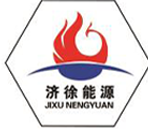
Oct . 10, 2024 14:38
Back to list
pressure reducing regulators
Understanding Pressure Reducing Regulators A Comprehensive Overview
Pressure reducing regulators (PRRs) are essential components in various industries, ensuring that the pressure of gases or liquids is properly managed and maintained within safe and operational limits. The purpose of these devices is to reduce a high input pressure to a lower, more controllable output pressure. This function is crucial in applications ranging from industrial processes to everyday household uses, such as gas supply for heating and cooking.
How Pressure Reducing Regulators Work
At the core of a PRR is a simple yet effective mechanism. When a high-pressure fluid enters the regulator, it pushes against a diaphragm or piston that is set to open and close according to the outlet pressure requirements. As the outlet pressure reaches the predetermined level, the regulator automatically adjusts to maintain this pressure, thereby allowing for a consistent flow rate and pressure regardless of fluctuations in the upstream supply.
PRRs can be categorized into several types, including direct-acting, pilot-operated, and electronic regulators. Direct-acting regulators are the most common design, where the diaphragm directly controls the flow. Pilot-operated regulators utilize a secondary valve controlled by the main valve to enhance performance and manage higher flow rates effectively. Electronic regulators, meanwhile, leverage sensors and actuators to provide precise control of pressure and are often incorporated into advanced automation systems.
Applications of Pressure Reducing Regulators
Pressure reducing regulators find applications in numerous fields. In the industrial sector, they are vital in processes where gases are used as raw materials or contaminants are present. For example, natural gas regulators help maintain proper pressure for residential heating systems and appliances, ensuring safety and efficiency.
Moreover, in the healthcare sector, PRRs are critical in oxygen delivery systems
. They help reduce the high-pressure gas from cylinders to a safe level for patients, ensuring that they receive the required flow rate without the risk of over-pressurization.In the chemical industry, precise pressure control is crucial for maintaining reactions within safety parameters. PRRs are employed to manage the pressure of feed gases or liquids entering reactors, thus safeguarding against explosions and maintaining product quality.
pressure reducing regulators

Importance of Choosing the Right Pressure Reducing Regulator
Choosing the appropriate pressure reducing regulator is imperative for optimal performance and safety. Several factors must be considered, including the type of fluid (gas or liquid), the required inlet and outlet pressures, the flow rate, and environmental conditions where the regulator will be installed.
For instance, materials of construction are critical in chemical applications. A regulator must be resistant to corrosion if it is to be used with aggressive fluids. Similarly, the temperature range of the operating environment can influence the choice of regulator, as some materials may not withstand extreme temperatures.
Furthermore, regulatory compliance is another vital consideration. Many industries are governed by strict regulations to ensure safety and environmental protection. Thus, selecting PRRs that meet industry standards is crucial to avoid legal ramifications and ensure operational reliability.
Maintenance and Troubleshooting
Like any mechanical device, pressure reducing regulators require regular maintenance to function efficiently. Routine inspections should be conducted to check for leaks, wear, and tear, or any signs of malfunction. A common issue is hunting, where the outlet pressure oscillates instead of stabilizing. This can signify that the regulator is undersized or that the set point is adjusted too close to the incoming pressure.
Proper installation is equally important; incorrect installations can lead to reduced performance and increased wear. It's advisable to consult with manufacturers or specialists when installing or maintaining PRRs, as they can provide valuable insights based on the specific application.
Conclusion
Pressure reducing regulators are critical components that ensure the safety and efficiency of gas and liquid flow in numerous applications. Understanding their functionality, appropriate application, and maintenance requirements can significantly enhance operational efficiency and safety. With advances in technology, the field of pressure regulation continues to evolve, offering solutions that meet the increasing demands of modern industries and healthcare, thereby ensuring safety and optimal performance in various systems. Investing in the right pressure reducing regulator not only protects equipment but also safeguards personnel and the environment, making it an integral part of any fluid handling system.
Next:
Latest news
-
Safety Valve Spring-Loaded Design Overpressure ProtectionNewsJul.25,2025
-
Precision Voltage Regulator AC5 Accuracy Grade PerformanceNewsJul.25,2025
-
Natural Gas Pressure Regulating Skid Industrial Pipeline ApplicationsNewsJul.25,2025
-
Natural Gas Filter Stainless Steel Mesh Element DesignNewsJul.25,2025
-
Gas Pressure Regulator Valve Direct-Acting Spring-Loaded DesignNewsJul.25,2025
-
Decompression Equipment Multi-Stage Heat Exchange System DesignNewsJul.25,2025

